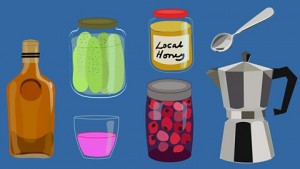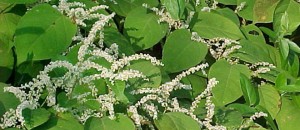After I was first diagnosed, I was a bit obsessed with what had caused my (smoldering) myeloma. Nobody in my family had had anything remotely similar—no blood cancers, that is. I hadn’t, as far as I knew (and know), been exposed to any of the toxic crap that has been associated with the development of myeloma. And so on. In sum, no idea how I got this thing…
In time, since even the virus connection seemed a bit weak (although it’s still on my “radar”), I determined I’d never figure it out, and that there was no point of digging and obsessing and getting all worked up about it. Relax, Margaret. And so I did. I let it go.
But now and again, stuff pops up in the news that gets me going on this topic…again. Today is one of those days…
A group of Yale researchers just published their findings about the cause of SOME myeloma cases in the New England Journal of Medicine: http://goo.gl/TlKzJh By the way, many thanks to TAB and other devoted blog readers for sending me the links to this new bit of…news. I would have seen it eventually, but right now I’m really bogged down with work (which is why I haven’t written anything recently for the blog, not even an itsy bitsy post about our recent business-and-also-pleasure trip to Amsterdam!).
Here is one of the important excerpts from the above-mentioned press release: “…chronic stimulation of the immune system by lipids made in the context of inflammation underlies the origins of at least a third of all myeloma cases.” Key words: “chronic,” that is, long-term; “inflammation”; and “at least a third of all myeloma cases.” Intriguing.
These new findings are based on previous ones showing that patients with Gaucher disease are more at risk of developing multiple myeloma. This was the first time I’d ever heard about Gaucher disease, so this morning I set about looking it up: basically, it’s a rare genetic (inherited) disease having to do with lipid storage. In simpler language (I hope!), an enzyme called glycolipid glucocerebroside, which is normally supposed to break down the fat in the body, undergoes a mutation that stops it from working normally. This means that the body can’t get rid of a type of fat called glucocerebroside, in fact, which begins to build up in some organs, especially in the spleen, liver, and, tada!, bone marrow. The fatty crap builds up in the bloodstream, too…and can reach toxic levels. And, tada again!, it also begins to accumulate in our macrophages = a type of white blood cell. And, quelle-coincidence-perhaps-not!, macrophages are involved in the protection and survival of myeloma cells, see for example this 2009 “Blood” study: http://goo.gl/WZGLxt Hmmm. A lot of food for thought, today! 🙂
Now, back to Gaucher disease: it can cause a lot of health problems, including bruising, fatigue, joint pain, even bone pain, low red blood cell count, and low blood platelets, among other things. It is also characterized by an enlarged liver and/or spleen (I’ve seen images online of grossly distended abdomens…).
You can find out if you have Gaucher disease by having a simple blood test done, a test that measures your glucocerebrosidase enzyme activity. If you don’t have Gaucher disease, those levels will be normal. If, however, the glucowhatever activity is less than normal, you may have to undergo further testing. I read that there is also a skin test…Anyway, if you suspect you might have Gaucher disease, or if you want to rule it out, ask your doctor. Again, keep in mind that it’s a rare disease…I personally don’t think it’s a cause of mine, but I do intend to talk things over with my doctor, since you never know…
Another interesting excerpt from the press release: “the researchers also discovered a subset of lipid-reactive immune cells, called type II NKT-TFH, that promote the development of plasma cells.” Hmmm. What does this mean? Not clear. Okay, I’ll need to read the full study at some point…Of course, it’s not available for free online, so I don’t have it at my fingertips…yet. But the press release has left me with more questions than answers at this point.
Even with having read the full shebang, though, what it seems we’re dealing with here is some sort of long-term immune activation caused by this malfunctioning enzyme, which eventually leads to the accumulation of toxic fatty material in some vital cells and organs. So it seems to me that we have here a direct link between systemic, chronic inflammation and myeloma. By the way, please correct me if I’m wrong…As you know, I’m not a scientist (my Ph.D. is in linguistics, historical linguistics, at that!)
Now, since we’re talking about the accumulation of FATTY material, does this mean that you’re more likely to get myeloma if you’re fat? After doing a bit of research, I believe the answer is a resounding “NO.” True, we frequently associate the word “lipid” with “fat,” but fats are actually a subgroup of lipids. So obesity, in my lay opinion, is not a factor in this particular scenario (again, please do correct me if I’m wrong!).
That said, I should note that some studies have indeed pointed to a link between obesity and the increased risk of developing myeloma. See this 2007 Harvard Med School study, for example: http://goo.gl/sVSDJ8
But, I repeat, in this particular case, things are quite different. This is an enzyme that we all have, no matter our body size…
I’d like to end my post with this excerpt from the Yale press release: “Understanding the origin of any cancer has several implications for how to best prevent it,” Dhodapkar said. “These studies set the stage for newer approaches to lower the levels of these lipids in patients with Gaucher disease and others with precursors for myeloma. Potentially, this could be achieved with drugs or lifestyle changes to reduce the levels of lipids to lower the risk of cancer.” I read about enzyme replacement therapy…But I need to have a closer look at that…
Still, wouldn’t that be absolutely amazing? I mean, not that having Gaucher’s disease is a picnic, mind you, but…well…Okay, I’d better stop here for today.
Anyway, today I’ve learned a few new things, which is always good. Now I’ve got to get back to my translations, or else I’ll be really really really sorry!!!!!! In fact, I already am…I mean, how did it get to be so bloody late?????? Yikessssss! 😉









 The description sounds quite innocuous, but in fact this plant is far from innocuous. It’s a terribly invasive, almost impossible-to-get-rid-of WEED that can take over huge expanses of land if unchecked, and its rhizomes can even cause extensive damage to building foundations, walls, and whatnot. Okay, well, there go my first thoughts of planting some in the back yard. Oooops, not happening!!!
The description sounds quite innocuous, but in fact this plant is far from innocuous. It’s a terribly invasive, almost impossible-to-get-rid-of WEED that can take over huge expanses of land if unchecked, and its rhizomes can even cause extensive damage to building foundations, walls, and whatnot. Okay, well, there go my first thoughts of planting some in the back yard. Oooops, not happening!!!